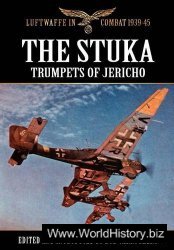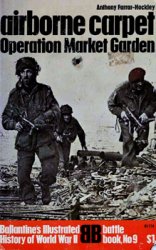2000). FCA is established at Manchester Airport in November 1995 as the in-house airline for the Flying Colours Leisure Group. The group is an umbrella organization for the tour operators Club 18-30, Priority Holidays, and Sunset Holidays. Erroll P. Cossey is chairman, with Jeremy Muller as managing director.
Orders are placed in 1996 for three owned B-757-200ERs and one each leased B-757-28AER and Airbus Industrie A320-200. Meanwhile, charter lift is provided under contract by other airlines, including Monarch Airlines, Ltd., which will also be contracted to provide the new line’s catering, ground service, and maintenance services.
In early 1997, FCA hires an initial staff of 72 pilots and 200 flight attendants. The leased B-757-28AER is received on February 26 and is employed, beginning on March 6, to offer holiday flights. The inaugural service is undertaken on behalf of Club 18-30 and Sunset Holidays from Manchester to the Canary Islands. Another tour, to Venice, takes off from the same market eight days later.
With the arrival of the first owned B-757-236ER in April, twice-weekly transatlantic charters are flown from Manchester to Orlando. Flights to the Caribbean are also operated on behalf of British Airways, Ltd. (2) using a leased DC-10-30.
While taxiing for departure from San Juan on May 11 on a service to London (LGW), BA Flight 4508, the Douglas wide-body with 14 crew and 248 passengers, suffers an engine fire in its No. 3 engine. The plane is stopped and all aboard are evacuated down chutes, during which exercise one passenger is seriously injured. Airport fire trucks arrive and extinguish the blaze.
The leased Airbus arrives in June and is employed during the summer season as Birmingham, Newcastle, and Glasgow join Manchester as departure points. Arrangements are completed in October with ILFC for the eight-year charter of a B-757-3Q8ER the following May.
Enplanements for the year total 1,103,700.
The B-757-3Q8ER duly arrives in May 1998. In June, Sunworld, Ltd. acquires the Flying Colours Leisure Group, and its carrier Flying Colours Airlines, Ltd., as its parent, Thomas Cook Group consolidates as a major European tour operator. The combined Airworld Aviation, Ltd./Flying Colours fleet will create the U. K.’s sixth largest airline, with a huge European charter network.
While en route to Turkey on a charter from the U. K. on July 21, a passenger becomes so inebriated and unruly that the captain of his B-757-23AER is forced to make an unscheduled landing at Bucharest to remove him.
The British Broadcasting Corporation (BBC) will report the following February 19 that, based on data supplied by the Air Transport Users Council, Flying Colours has had only 5.33% of its summer flights delayed by more than an hour. At the top of the on-time list of European nonscheduled carriers, the average length of a company delay has been just 8.33 min.
In late October, Thomas Cook Group, which has recently purchased and begun to merge both Sunworld and its house carrier Airworld Aviation, Ltd., as well as Flying Colours, acquires Carlson Leisure Group and its airlines Caledonian Airways, Ltd. (2) and Peach Air.
Passenger traffic is reported through October and shows bookings of 1,05 million; 463,000 FTKs are also operated.
By November 1, the U. K. charter airline business is rapidly approaching consolidation. Through its October move, Thomas Cook gains Caledonian’s slots at London (LGW) and Manchester and, with 32 aircraft, now owns the second largest fleet among the nation’s charter carriers.
Plans are announced for an increase of service from London (STN), Bristol, Cardiff, Birmingham, and Glasgow. The fleet will also be rationalized, with only the TriStars seen as certain for retention.
At the beginning of the winter charter season in November, an A320-214 is leased from Flying Colours to the U. S. operator Ryan Air International. Wearing a pure white color scheme with a large apple painted on its tail, the Airbus is operated on behalf of Apple Vacations from cities in the northern U. S. to the Caribbean, Costa Rica, and Mexico.
As the year ends, Thomas Cook Group, which has assigned its own name to the enlarged travel group, is conducting marketing surveys to determine which airline brand name has the best public image and should be retained for the larger carrier. Early betting is that the names Caledonian (with its memory of delays and incidents) and Peach Air will disappear in addition to that of Airworld, with the romantic Flying Colours winning the label. A final decision is promised before the start of the 1999 summer holiday season.
Under a general agreement signed with Westdeutsche Landesbank (WestLB) on December 23, Preussag, A. G. acquires a 24.9% stake in Thomas Cook Group, parent of Flying Colours. An additional agreement provides that Preussag, subject to the approval of the German Federal Cartel Office, will acquire a further 25.2% stake by September 30, 1999, thereby achieving 51.1% majority shareholding. The prize is assigned to the Hapag-Touristik Union (HTU), which, since October 1, has controlled the tourism activities of Hapag-Lloyd, A. G. and Touristik Union International (TUI). In announcing the deal, Preussag Managing Director Dr. Michael Frenzel indicates that his concern will now join in the merger discussions being held between Thomas Cook and the Minneapolis-based Carlson Leisure Group for the acquisition of Carlson Leisure Group U. K.
Passenger boardings during the year increase 92.2% to 2.12 million.
The merger between Thomas Cook and the Carlson companies is completed on February 2. 1999. Shareholders Carlson Companies, Westdeutsche Landsbank, Thomas Cook, and Preussag, A. G. combine their shares with those of Carlson Leisure Group U. K. to create Thomas Cook Holdings. The Preussag arrangement to acquire 51.1% majority control is transferred to this new entity. With over 20,000 employees, Thomas Cook Holdings is now the third largest of the “big four” British travel and tour operators after Thomson and Airtours.
Although Flying Colours is, indeed, the surviving airline, the Caledonian Airways, Ltd. (2) brand does not immediately disappear. The two companies, with their enlarged fleet of 34 aircraft, begin the new summer holiday season at the end of March 1999. The amalgamation of travel concerns comes as the European Commission grants permission for Thomas Cook to merge with the Carlson Leisure Group’s U. K. travel interests. Caledonian, for its part, launches direct weekly return charter flights from London (LGW) to St. Thomas, U. S. Virgin Islands.
Just after departure from London (LGW) for Tenerife on April 27, a couple on board a Flying Colours B-757-23AER gets into a fistfight and must be restrained by fellow passengers and cabin crew. Police are on hand when the aircraft lands on the Spanish island, but the matter has, by then, been sorted out and they are not arrested.
Plans for amalgamation with Caledonian Airways, Ltd. (2) at the conclusion of the summer holiday season in November proceed; it is anticipated that the two carriers will officially become one by the end of March 2000.
Caledonian Operations Director David Newall and Operations Manager Barry Fitzgerald resign in July, as Robert Willis becomes operations general manager for the combined operation. The engineering facilities of the two companies are also combined at Manchester, with some job loss, while fleet rationalization and repainting continues. Arrangements are also made under a new fleet rationalization plan to replace four L-1011s with three B-757-200s and to return three wet-leased TriStars to Air Atlanta Icelandic, H. F.
On September 1, Thomas Cook Group establishes a new holiday travel concern to replace its Sunworld, Sunset, and Inspiration holiday subsidiaries, as well as both Caledonian and Flying Colours Airlines, Ltd. Under the direction of Managing Director Simon Vincent, the new travel brand, to be known as JMC after the son of Thomas Cook (John Mason Cook), will complete this changeover within five years, assisted in the process by a ?200 million ($320 million) investment program.
As aircraft are repainted and other vestiges of corporate image are altered, the names of the tour operating division (JCM Holidays, Ltd.) and in-house airline (JCM Airlines, Ltd.) will be gradually introduced during the next six months. Terry Soult is named managing director of the new JCM Airlines, Ltd. Customer bookings for the final year skyrocket 140.9% to 3,738,000.
The workforce at the beginning of 2000 totals 2,037. Caledonian Airways, Ltd. (2) and Flying Colours Airlines, Ltd. disappear completely on March 26, 2000 when JMC Airlines, Ltd. becomes operational under a single air operator certificate.
FLYING DUTCHMAN CORPORATION: United States (19751976) . The Flying Dutchman Corporation of Amherst, New Hampshire, establishes a scheduled airline subsidiary at Manchester in 1975 to provide scheduled passenger and cargo services to Washington, D. C. (DCA). Daily Piper PA-31-310 Navajo roundtrips are duly inaugurated, but cannot be maintained beyond 1976.
FLYING ENTERPRISE, A. B.: Sweden (1989-2000). Flying Enterprise is established by pilot and former sea captain Eigil Jakobsen at Fly-gfaltsgatan in Torslanda in 1989 to offer domestic passenger and cargo charters. Revenues commence with a single Fairchild-Swearingen Metro II.
Over the next six years, the employee population grows to approximately 70 and the fleet is expanded by the addition of 3 Shorts 360300s. Regularly scheduled flights commence in 1994 linking Jonkoping with Skovde and Stockholm’s Arlanda and Bromma Airports. Plans are made to begin flying into Poland from Stockholm (Arlanda Airport).
Owned by Tipp and Kran Transport (Tipp Fastighets, A. B.), FE continues flights in 1995-1997; Eigil Jakobsen is now president, with Alf Lindqvist as chairman. The employee population numbers 103 and the fleet comprises 3 Piper PA-31-350 Navajo Chieftains, 2 Metro IIs, 3 British Aerospace BAe Jetstream 31s, 3 Shorts 360-300s, and 1 Shorts 330. Destinations visited include Gdansk, Halmstad, Jonkoping, Skovde, Stockholm (Arlanda and Bromma Airports), and Visby.
Revenues reach $22,000,000.
Flights continue in 1998. To make up for the loss of feeder services provided by Air Botnia, A. B. before its purchase by SAS (Scandinavian Airlines System), Finnair O/Y enters into an arrangement with Flying Enterprise. Four SAAB 340s previously employed by Finnavia-tion, O/Y are sold to Swedish regional and then wet-leased back to Finnair.
This new approach to covering Finnish domestic service does not prove profitable and Finnair O/Y serves notice that it would like to terminate its arrangement at the end October 1999. That date will actually be missed by six months.
During the fall of 1999, President Jakobsen enters into negotiations with the large Swedish regional Skyways, A. B. concerning a possible equity stake or corporate takeover. On January 18, 2000, Skyways Holdings, A. B. agrees to purchase 900,000 A shares of Flying Enterprise from Tipp Fastighets, A. B. for SKr 62.50 per share; B shares will fetch SKr 60 per share. The board of directors approves of the sale at a special meeting on February 15. The remaining B shares are purchased from other shareholders and the entire transaction is completed by February 28.
Renamed Skyways Enterprise, A. B., the company’s agreement with Finnair O/Y is cancelled during the first week of March, leading to termination of the wet-lease service operated by Flying Enterprise from Helsinki to Mikkeli.




 World History
World History









